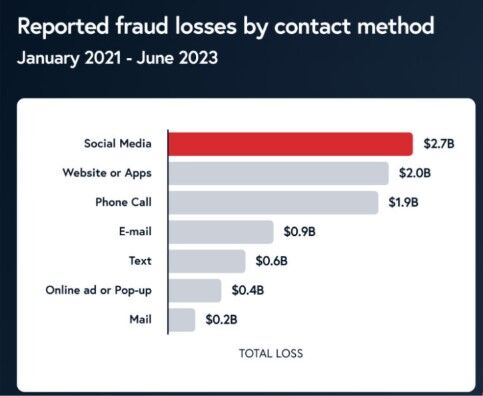The rise of resale fraud: a growing threat to merchants and marketplaces
Irina Ionescu
13 May 2025 / 5 Min Read
Resale fraud has rapidly evolved from a marginal retail nuisance into a complex, high-volume threat with significant implications for merchants, marketplaces, and consumers alike. Once limited to isolated thefts and informal exchanges, today’s resale fraud operations often resemble well-organised enterprises built on stolen credentials, digital automation, and global distribution networks.
In 2022 alone, US retailers faced more than USD 100 billion in losses attributed to theft and fraud. A notable share of this can be linked to merchandise destined for resale, often funneled through online marketplaces or social commerce platforms. The shift from physical retail to digital commerce has introduced both scale and anonymity, enabling fraud actors to operate across channels and borders with increasing ease.

What is resale fraud and why is it booming?
At its core, resale fraud (sometimes called reseller fraud) happens when bad actors fraudulently acquire goods and flip them for profit. Unlike traditional payment fraud, where the objective is often direct monetary gain, resale fraud transforms products into liquid assets that can be sold for profit. Here is how it typically works:
-
Fraudsters make large bulk purchases of in-demand items, i.e., gaming consoles, luxury sneakers, or concert tickets (Ticketmaster);
-
They often use stolen payment information, stolen cards, hacked accounts, or synthetic identities;
-
Once the goods are secured, they resell them through online marketplaces or secondary platforms;
-
When the real cardholder disputes the fraudulent charge, the merchant loses the product, the sale, and absorbs costly chargeback fees;
-
Some of the key types of reseller fraud present in the market include gray market selling (selling outside distribution network), product diversion, affiliation misrepresentation, retail scalping (bulk purchasing limited products), retail arbitrage and counterfeit goods etc.
Sometimes, bots even automate the process, allowing criminals to snatch up limited-release products in milliseconds, shutting out real customers.
These tactics are often deployed at scale, and the distinction between individual fraud and organised retail crime is increasingly blurred. In many cases, resale fraud serves as a bridge between traditional retail theft and digital commerce fraud, effectively converting illicitly acquired products into cash via legitimate-looking sales. The result? Merchants suffer financial loss, inventory drains unfairly, and consumers are frustrated when legitimate buying opportunities vanish.
The new face of retail risk
-
Revenue and inventory loss. Every product fraudulently acquired represents not only a lost sale but also unrecoverable stock, logistical overhead, and customer service burden. This is particularly damaging for low-margin, high-volume retailers where the cumulative effect can be difficult to absorb.
-
Operational disruption. Responding to fraud through investigation, dispute resolution, and fraud system tuning diverts attention and resources from growth initiatives. Companies are often forced to deploy additional layers of verification, customer support, and manual review, which can strain operations and increase costs.
-
Brand erosion. When consumers find high-demand products consistently out of stock, or unknowingly purchase stolen or diverted goods, their confidence in the brand or marketplace suffers. This can create long-term reputational damage, particularly in segments where loyalty is linked to product availability or authenticity.
-
Trust in marketplaces. While large retailers are frequent targets, smaller merchants and niche brands are increasingly vulnerable due to more limited fraud prevention capabilities and thinner operating margins, and it’s not just big retailers.
Why the shift to ecommerce/online channels made things worse
Several digital trends have made resale fraud much easier:
-
Anonymity. The ability to create seller accounts with minimal verification has enabled fraudsters to embed themselves within major marketplaces or operate through rapidly recycled profiles.
-
Automation and bot use. Fraud actors employ automated tools to bypass conventional checkout processes, enabling the rapid acquisition of scarce goods before genuine customers have a chance to act.
-
Marketplace decentralisation. The proliferation of resale channels including peer-to-peer platforms, social commerce, and direct-to-consumer storefronts has created fragmented oversight, making it harder to trace the origins of fraudulent good.
-
Insufficient onboarding and monitoring. Inadequate Know Your Business (KYB) practices have allowed bad actors to masquerade as legitimate resellers, often cycling through multiple identities or shell accounts to avoid detection.
-
Policy loopholes. Return fraud, order manipulation, and inventory arbitrage have grown in tandem with liberal customer policies and inconsistent enforcement mechanisms.
The regulatory response and why it’s not enough yet
New laws like the INFORM Consumers Act now require marketplaces to verify high-volume sellers. Some states, like California, have implemented or proposed even stricter requirements, mandating clearer disclosures, fraud reporting mechanisms, and seller accountability.
The Combating Organized Retail Crime Act seeks to create a national coordination center and provide additional funding and prosecutorial power for cross-border fraud cases. If passed, this could support a more unified response to fraud syndicates operating across states and platforms.
Globally, similar measures are taking shape. The EU’s Digital Services Act introduces obligations around seller verification and illegal content removal, setting the stage for broader platform oversight. In the UK and APAC, regulators are exploring public-private collaborations and digital ID initiatives to strengthen fraud prevention. And, while resale fraud is not yet universally regulated as a category, the trend is clearly toward stricter controls on third-party seller ecosystems.
Strategic imperatives for merchants
While regulations provide a foundation, merchants must actively build layered defenses to detect and deter resale fraud. Key areas of focus include:
-
Enhanced seller and buyer vetting. Implement robust KYB and KYC controls while onboarding and periodically revalidate high-risk or high-volume accounts.
-
Intelligent fraud detection. Use machine learning to spot velocity anomalies, identity inconsistencies, or bulk-buying behaviors that signal coordinated attacks and algorithms to know your user via biometric detection.
-
Limits on high-demand SKUs. Restrict quantity purchases, especially during new product drops, and monitor for abnormal repeat transactions or linked addresses.
-
Policy calibration. Tighten refund and return policies in known abuse categories without compromising genuine customer experience.
-
Cross-functional coordination. Connect fraud, payments, logistics, and customer service teams to recognise patterns that may otherwise be siloed.
-
External collaboration. Participate in data-sharing forums, joint task forces, and industry consortia focused on fraud prevention and marketplace integrity. Fraud rings operate as networks. Merchants must do the same.
Looking ahead: a shifting threat landscape
Resale fraud continues to evolve in both form and frequency. As long as incentives remain high and detection barriers remain low, sophisticated actors will explore new angles from exploiting generative AI in fraud scripts to infiltrating loyalty programmes or embedded finance flows.
What emerges is a broader recognition that combating resale fraud is not just a technical challenge, but an ecosystem-wide concern. It requires alignment across platforms, payment networks, regulators, and merchants to ensure that commerce digital or physical remains a space governed by trust, fairness, and security.
While no single measure will eliminate the threat, a more coordinated and intelligence-driven approach can significantly shift the balance. The capacity to adapt to changes in fraud patterns, to regulatory mandates, and to consumer expectations — will increasingly define which businesses can grow sustainably in this environment, and which fall behind.
About Pranati Dave
 Pranati Dave is a Practice Director at Everest Group and is responsible for leading Everest Group’s BFS IT services and technology research programme. She has broad experience advising BFS enterprises and service providers on technology sourcing, technology-led operations transformation, and go-to-market strategies. She played a pivotal role in building knowledge assets, thought leadership, and market updates for the BFS IT services programme.
Pranati Dave is a Practice Director at Everest Group and is responsible for leading Everest Group’s BFS IT services and technology research programme. She has broad experience advising BFS enterprises and service providers on technology sourcing, technology-led operations transformation, and go-to-market strategies. She played a pivotal role in building knowledge assets, thought leadership, and market updates for the BFS IT services programme.
About Srawesh Subba
 Srawesh Subba is a Practice Director on the BFSI team, where he helps clients otopics related to BFS outsourcing, including outsourcing strategy, delivery models, market strategies, mergers and acquisition support, benchmarking, and many more. He also looks after financial crime and compliance.
Srawesh Subba is a Practice Director on the BFSI team, where he helps clients otopics related to BFS outsourcing, including outsourcing strategy, delivery models, market strategies, mergers and acquisition support, benchmarking, and many more. He also looks after financial crime and compliance.
About Everest Group
 Everest Group is a leading global research firm helping business leaders make confident decisions. We guide clients through today’s market challenges and strengthen their strategies by applying contextualised problem-solving to their unique situations. This drives maximised operational and financial performance and transformative experiences. Our deep expertise and tenacious research focused on technology, business processes, and engineering through the lenses of talent, sustainability, and sourcing deliver precise and action-oriented guidance. Find further details and in-depth content at www.everestgrp.com.
Everest Group is a leading global research firm helping business leaders make confident decisions. We guide clients through today’s market challenges and strengthen their strategies by applying contextualised problem-solving to their unique situations. This drives maximised operational and financial performance and transformative experiences. Our deep expertise and tenacious research focused on technology, business processes, and engineering through the lenses of talent, sustainability, and sourcing deliver precise and action-oriented guidance. Find further details and in-depth content at www.everestgrp.com.
Irina Ionescu
13 May 2025 / 5 Min Read
The Paypers is the Netherlands-based leading independent source of news and intelligence for professional in the global payment community.
The Paypers provides a wide range of news and analysis products aimed at keeping the ecommerce, fintech, and payment professionals informed about the latest developments in the industry.
Current themes
No part of this site can be reproduced without explicit permission of The Paypers (v2.7).
Privacy Policy / Cookie Statement
Copyright